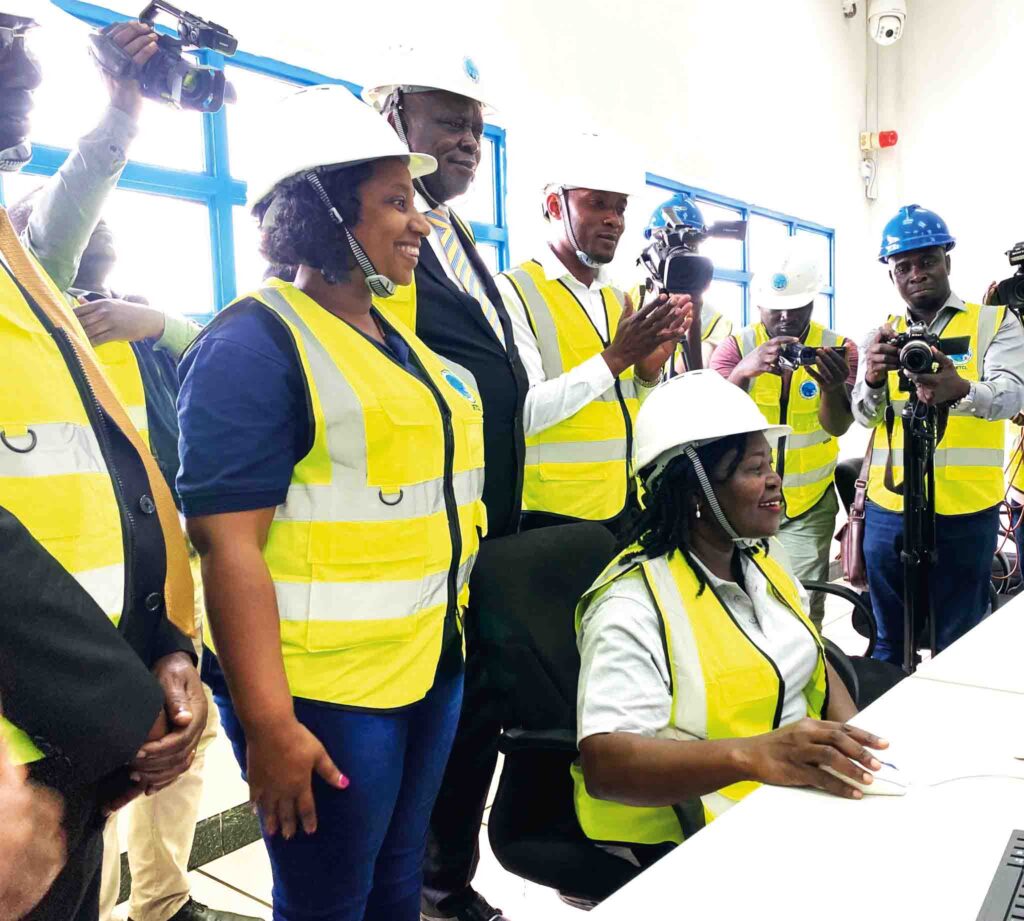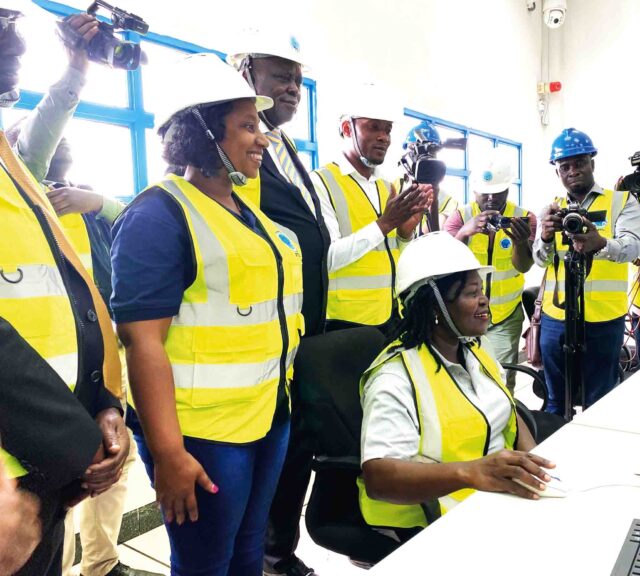By Lydia Labanya
The minister of Energy and Mineral Development, Ruth Nankabirwa has urged industrialists to invest in initiatives that increase their production capabilities and in turn electricity consumption or forget about low tariffs.
Nankabirwa was speaking during the commissioning of the Luzira-Namanve transmission line and associated substations at both ends in Namanve industrial park recently.
The appeal to industrialists came after the Uganda Manufacturers Association (UMA) appealed to Nankabirwa to implement the presidential directive of supplying power to industrialists at US5 cents (about Shs 185) per unit.
It has been repeatedly argued that the US5 cents tariff will reduce manufacturers’ cost of production and make them more competitive in regional and international markets.
“If we are to export and supply to different markets, we have to be competitive.
“Our electricity is slightly more expensive and it makes us less competitive,” Joseph Sendaula, a representative of the Uganda Manufacturers Association said.
Sendaula’s appeal was met with cold facts of manufacturers’ inability to utilise the available electricity capacity, something that in turn threw the ball into their court.
For instance, the Namanve substation that serves the Namanve industrial park has installed capabilities of supplying up to 189 megawatts of electricity at full capacity.
However, the park’s demand, according to the Uganda Investment Authority (UIA), is currently estimated at 61MW at full capacity.
This means that Namanve industrial park is only able to utilise just 32 percent of the substation’s capacity.
To UIA, the availability of the unutilised electricity supply gives the agency ‘legroom’ to attract more investors to the park on the premise that there is a sufficient energy supply.
But to Nankabirwa, this is an indictment that the industrialists are not sufficiently utilising the available energy resources despite their demands.

“We are now forcing consumption. You are doing us a disservice if you don’t consume what we have given you,” Nankabirwa told manufacturers.
She tasked the Uganda Electricity Transmission Company Limited (UETCL), the government agency operating high-voltage electricity infrastructure, to make a countrywide assessment of the substations’ installed capacity and their respective consumption.
“…so that we now begin whipping the industrialists. You stand and demand for power yet you are not consuming this power,” Nankabirwa said.
Uganda has an installed generation capacity of about 1,378MW with a peak consumption of about 765MW leaving the country with the unutilised capacity of over 600MW.
The situation is expected to worsen with the expected commissioning of the 600MW Karuma hydropower project this year. This will push excess generation capacity to over 1,000MW.
Manufactures have always been looked at as the biggest remedy to consume the excess generation capacity as the country pursues an industrialisation agenda.
Last year, the government piloted the US5 cents in Lao Shen industrial park in Kapeka and MMP industrial area in Buikwe district before it could consider rolling it out to other industrialists.
During the pilot period, the government sought to assess whether consumption in the two industrial parks would increase to offset the revenue shortfall that would result from supplying electricity at US5 cent per unit, which was and is still lower than the prevailing market tariff.
If the consumption did not cover the revenue shortfall occasioned by supplying at US5 cents, the government would consider subsidies.
Disappointing results
Nankabirwa said the one-year pilot delivered discouraging results to the roll out of the US5 cents to other industries.
“We put them at US5 cents per unit supply with a promise of increasing demand but consumption remained the same after one year. Without increased consumption, you leave me with a revenue shortfall and I will be forced to ask for subsidies,” Nankabirwa said.
For this reason, she demanded that industrialists commit to increasing their consumption before benefiting from the lower tariff.
“I need you to convince me that you will increase consumption. I want to implement the directive in a way that I will not end up asking for a subsidy.
If you have been spending sh4b monthly at a higher tariff, you will have to increase your consumption when you are consuming at a lower tariff so that you can maintain the sh4b monthly bill,” Nankabirwa said.
In this, manufacturers will be required to sign memoranda of understanding with the Electricity Regulatory Authority (ERA) for increasing consumption before they benefit from the lower tariff.
The Good News paper learnt that up to 40 industrialists have expressed interest in signing the memoranda of understanding.
USD100m project
The commissioning marked the end of the first phase of the $100m electrification of industrial parks project implemented by the UETCL.
Through the project, UETCL has developed high voltage transmission lines and associated substations in industrial parks of Namanve, Luzira, Mukono and Iganga and this has improved the quality and reliability of supply to the industrial parks.






















